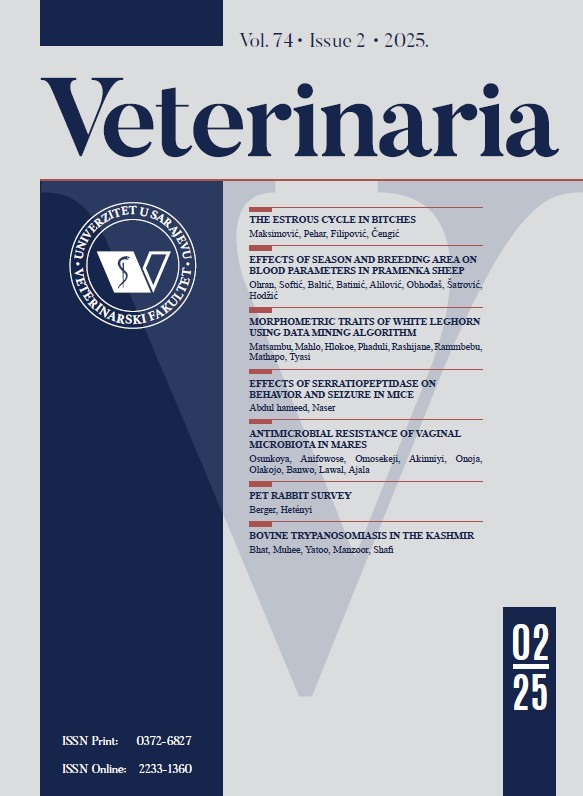The effect of caroverine and its combination with aminooxyacetic acid on survival time of mice with experimental tetanus
Keywords:
tetanus, tetanus toxin, transmitors, caroverine, aminooxyacetic acidAbstract
Tetanus is a disease that occurs in humans and various animal species worldwide. Tetanus toxin, after binding itself to nerve structures in the spinal cord, blocking the release of inhibitory transmitors which results in predominance of excitatory transmitors, and this manifestes itself in skeletal muscle spasm. In theory, inhibition of excitatory transmission can try to antagonize a number of ways: by stimulating inhibitory transmission with application inhibitory transmitors, inhibition of excitatory transmission by application of antagonists of excitatory transmitors and combination of antagonists of excitatory transmitors. Bearing this in mind, we attempted to normalize the disorders by tetanus toxin with the use of caroverine, an antagonist of excitatory transmitors, alone and in combination with aminooxyacetic acid (substance that increases the level of GABA). Experiments were conducted on albino mice of both sexes, weight 20-25 g. The experimental tetanus was induced by application of tetanus toxin. The application of caroverine and combination with aminooxyacetic acid was carried out 24 hours after application of tetanus toxin, once per day, until the death. Caroverine, given alone in a dose of 1,2 mg/kg significantly prolonged the LD50 period of mice with experimental tetanus, so the obtained results can be said that its application only at this dose proved to be effective. The combination with aminooxyacetic acid was gave an insignificant extension of mice’s dying time with experimental tetanus in the trial, compared to the control group.
Downloads
Published
How to Cite
Issue
Section
License
Copyright (c) 2020 Indira Mujezinović , Mehmed Muminović, Ahmed Smajlović

This work is licensed under a Creative Commons Attribution 4.0 International License.







